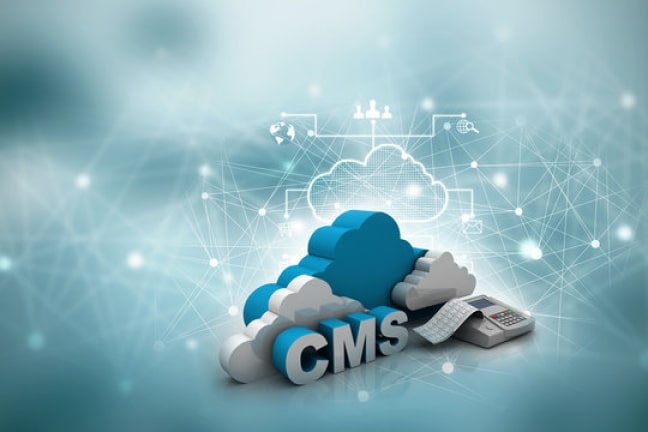Streamlining Your Web Presence: Content Management Systems (CMS) Are Powerful
In today’s digital age, a strong online presence is essential for businesses, organizations, and individuals to reach a wider audience, establish credibility, and achieve their goals. Content Management Systems (CMS) have emerged as powerful tools that streamline website creation, management, and maintenance. In this blog, we will explore the significance of CMS and how it empowers users to take control of their web presence.
1. Understanding Content Management Systems (CMS)
Content Management Systems are software applications designed to facilitate the creation, modification, and organization of digital content, primarily websites and blogs. With a CMS, users can manage their site’s content, design, and functionality without extensive coding knowledge. This user-friendly interface has opened up the world of web development to a broader audience, allowing even non-technical users to build and maintain professional-looking websites.
2. The Advantages of Using a CMS for Your Website or Blog
CMS platforms offer numerous advantages that make them a popular choice for website management:
- Easy Content Creation and Editing: One of the primary advantages of CMS is its ability to simplify content creation and editing. Users can create, format, and update content using familiar word processor-like interfaces.
- Flexible Design Options: CMS platforms offer a wide range of themes and templates, enabling users to customize the look and feel of their website without the need for extensive design skills.
- Seamless Collaboration: CMS allows multiple users to collaborate on content creation and website management, streamlining workflows for teams and organizations.
- Search Engine Optimization (SEO) Friendly: Many CMS platforms come with built-in SEO tools or plugins, helping users optimize their content for better search engine rankings.
- Mobile Responsiveness: Modern CMS platforms ensure that websites are mobile-friendly, providing a better user experience across different devices.
3. Exploring the Top CMS Platforms: Which One Suits Your Needs?
A plethora of CMS platforms are available on the market today, each with its unique strengths and features. Let’s explore some of the most popular ones:
- WordPress: WordPress is the most widely used CMS globally, powering over 40% of websites on the internet. It is renowned for its ease of use, vast plugin library, and active community support.
- Joomla: Joomla is a robust CMS favored for its versatility and ability to handle more complex websites, making it an excellent choice for e-commerce and community-based platforms.
- Drupal: Drupal is a highly flexible CMS preferred for building large-scale, feature-rich websites with complex content structures.
- Wix: Wix is a user-friendly website builder that offers drag-and-drop functionality, making it ideal for beginners and small businesses.
- Squarespace: Squarespace is known for its elegant and modern templates, perfect for creatives and individuals looking to showcase their work.
4. Step-by-Step Guide to Setting Up Your Website with a CMS
Let’s take a closer look at the process of setting up a website using a CMS:
Step 1: Choosing a Domain and Hosting: The first step is to select a domain name that represents your brand or business. Next, choose a reliable web hosting provider to store your website’s files and data.
Step 2: CMS Installation: Most hosting providers offer one-click installations for popular CMS platforms, making it easy to get started. Alternatively, you can manually install the CMS of your choice.
Step 3: Selecting a Theme/Template: Browse through the available themes or templates and choose one that aligns with your website’s purpose and design preferences.
Step 4: Customizing Your Website: Once you’ve installed a theme, you can customize it further by adding your logo, changing colors, and arranging page layouts.
Step 5: Creating Content: Begin creating and adding content to your website, including pages, blog posts, images, and videos.
Step 6: Installing Plugins and Extensions: Enhance your website’s functionality by installing relevant plugins or extensions. These could include SEO tools, contact forms, social media integrations, and more.
Step 7: Testing and Launching: Before launching your website, thoroughly test its functionality and responsiveness across different devices and browsers.
Step 8: Regular Maintenance: Keep your website updated with fresh content and security patches to ensure a smooth user experience and protect against potential threats.
5. Customization and Personalization: Tailoring Your Website with CMS
One of the significant advantages of CMS is its ability to be customized and personalized to suit your specific needs. Users can:
- Install Plugins and Extensions: CMS platforms offer a wide range of plugins and extensions that add new features and functionalities to your website. These can range from simple contact forms to sophisticated e-commerce solutions.
- Customize Themes and Templates: Themes and templates can be customized to match your brand’s identity and create a unique look for your website.
- Build Custom Content Types: CMS platforms allow users to create custom content types to organize and present information in a structured manner. For instance, you can create content types for team members, products, events, etc.
6. SEO and Content Management: Boosting Your Website’s Visibility
A well-optimized website is essential for attracting organic traffic from search engines. CMS platforms often come with built-in SEO features or offer SEO plugins that assist users in optimizing their content for better search engine visibility. Some key SEO considerations include:
- Keyword Research: Identify relevant keywords and phrases that your target audience is likely to use in their search queries.
- On-Page SEO: Ensure that your website’s meta tags, headings, and content are optimized with your target keywords.
- Mobile Responsiveness: With the increasing use of mobile devices, having a mobile-friendly website is critical for SEO and user experience.
- Page Speed Optimization: Improve your website’s loading speed to enhance user experience and search engine rankings.
- The Importance of Regular Updates and Maintenance in CMS
Maintaining your website’s CMS and plugins up-to-date is vital for several reasons:
- Security: Regular updates often include security patches that protect your website from potential vulnerabilities and cyber threats.
- Bug Fixes and Improvements: Updates also address software bugs and provide improvements to existing features.
- Compatibility: Ensuring all components of your website are compatible with the latest version of the CMS helps maintain its functionality.
8. Enhancing User Experience through CMS Features
A positive user experience is crucial for retaining visitors and encouraging them to explore your website further. CMS platforms offer various features to enhance the user experience, including:
- Easy Navigation: Intuitive menus and navigation structures help visitors find the information they need quickly.
- Search Functionality: Implementing a search feature allows users to search for specific content within your website.
- Fast Loading Times: Optimizing images and website performance contributes to faster loading times, reducing bounce rates.
- Mobile Optimization: Ensure your website is responsive and looks great on mobile devices.
9. Security in CMS: Protecting Your Website from Cyber Threats
Website security is a critical concern for all website owners. Here are some security measures you can take:
- Strong Passwords: Use complex and unique passwords for your CMS login and hosting accounts.
- Regular Backups: Regularly back up your website’s data to safeguard against data loss.
- SSL Certificate: Implement SSL encryption to secure data transmission between





